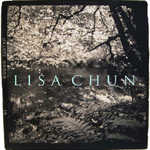The fence you see is wood hewn from hinoki1. This hinoki fence glowed. It was unnaturally smooth to the touch. The sort of smooth you want to take your face to, to push your cheek against and close your eyes and … no no no, you stop yourself. You don’t want to be scolded by a priest.
The posts, also glowing, anchoring the boards, were so round as to feel they had sprouted from the ground just like that, as they were, right where they stood. And upon the posts were tiny things that had sprouted — sakaki. An evergreen used in Shinto rituals.
Heck, the whole shrine was alight with the brightness of fresh wood, life. As it should have been — it was brand new.
Ise — Ise Grand Shrine, Ise Jingu — is one heck of a Shinto shrine, arguably the most important shrine in Japan. It holds, among other things, a sacred mirror (Yata no Kagami), which no normals are allowed to see. But what makes Ise so especially special though is that it is the home of Amaterasu — the goddess of the sun and the universe. So within Ise is a fancy mirror, sure, but also the universe.
Strangest of all, though, is that Ise is a shrine with a built-in expiration date: 20 years.
Every 20 years, for the past 1200 or so, they’ve rebuilt the shrine just a hundred meters of so over from where it stands. Then 20 years later they rebuild it once again in the previous spot. 2013 was a year of rebuilding — the 62nd Shikinen Sengu.
Shinto is a religion of renewal cycles — often yearly — unsurprisingly mirroring crop harvest cycles. Within it the idea of impermanence is strong.
Aside from simply aligning with the ideas of renewal and impermanence, the process of regular rebuilding contains within it a cultural insurance policy. Every twenty years the skills necessary to build this kind of shrine are maintained, honed, passed down from master carpenter to apprentice in perpetuity.
You can see the new shrine here:

(Look at the old fence!)
It’s hard to take great photos because they are very strict, the priests. Once you cross a certain threshold at the entrance to the shrine, photos are strictly forbidden. The priests, they scold, hard and fast.
After recovering from the first-contact with such expertly cut fresh hinoki you are struck by the simplicity of the structure. Ise was built before Buddhist architecture entered Japan so it’s modeled after a simple granary with a beautiful, thick, thatched reed roof. There’s something about that thatch — its otherworldly texture — that when you see it in person, you undergo a similar impression as to seeing an HD TV for the first time — that the image, the thing before you, wasn’t real, or, clearly, wasn’t part of your current universe. But yet, unlike with TV, it is absolutely real, floating in front of you.
We arrived at this shrine on November 2nd, my birthday. Ise is a wonderful place to spend a birthday. It’s not nearly as remote as Annapurna Basecamp, where I spent my birthday four years prior, but it’s cut from a similar spiritual cloth.
Because Ise keeps the old shrine up during the year of rebuilding, you are able to see starkly, unambiguously, the aging process. You see — and touch — the old warped boards, the tattered roofs, the darkened and aged wood next to the fresh, glowing, new wood. One not necessarily being better than the other.
Altogether, it becomes a celebration of change. Most strikingly, it reminded me how deeply we obsesses over minimizing upkeep, minimizing maintenance — of ourselves, our possessions, our relationships. As if maintenance was something to be reviled. As if the goal of all technological advancement was to simply freeze the world — place it in an unchanging box, kick back our feet, slap up the vinyl siding and … lounge forever? Hose the universe down every few months?
It reminded me of the false notion — like a fad diet — that you can do something once for a limited period of time and reap the benefits for your entire life. It also reminded me of love, and how love, too, is difficult, fluid, changing. How love can and will fade and peel and requires a constant stream of effort, conscious maintenance, love heaped atop more love, to keep up, fresh. To keep beautiful.
It made me remember that we often conflate working hard now with coasting later as a meaningful goal, a noble sequence. As if working hard is not to be enjoyed. As if work itself — maintenance of the universe, our endless fight against entropy — is wrong, a product of not-yet-good-enough-advancements. As if we’re just another tech-rev away from endless coasting. And that coasting, lounging, is the ultimate goal worthy of all sacrifice.
It made me think of all these things — a lot for a simple shrine. But — ignoring for a second the religious aspect of the site — there was something undeniably correct about the structure, the process, the ethos. Something that had been decided 1200 years ago and still, today, held true. Perhaps truer and more instructive than ever. And that to stand before these two shrines and witness the clear effects of time and nature and reaffirm the value in the constant application of energy our world requires — and the beauty present in that processes — was the best birthday gift I’d been given in a very long time.
-
Japanese Cypress — the same stuff from which their great smelling baths are made ↩





































